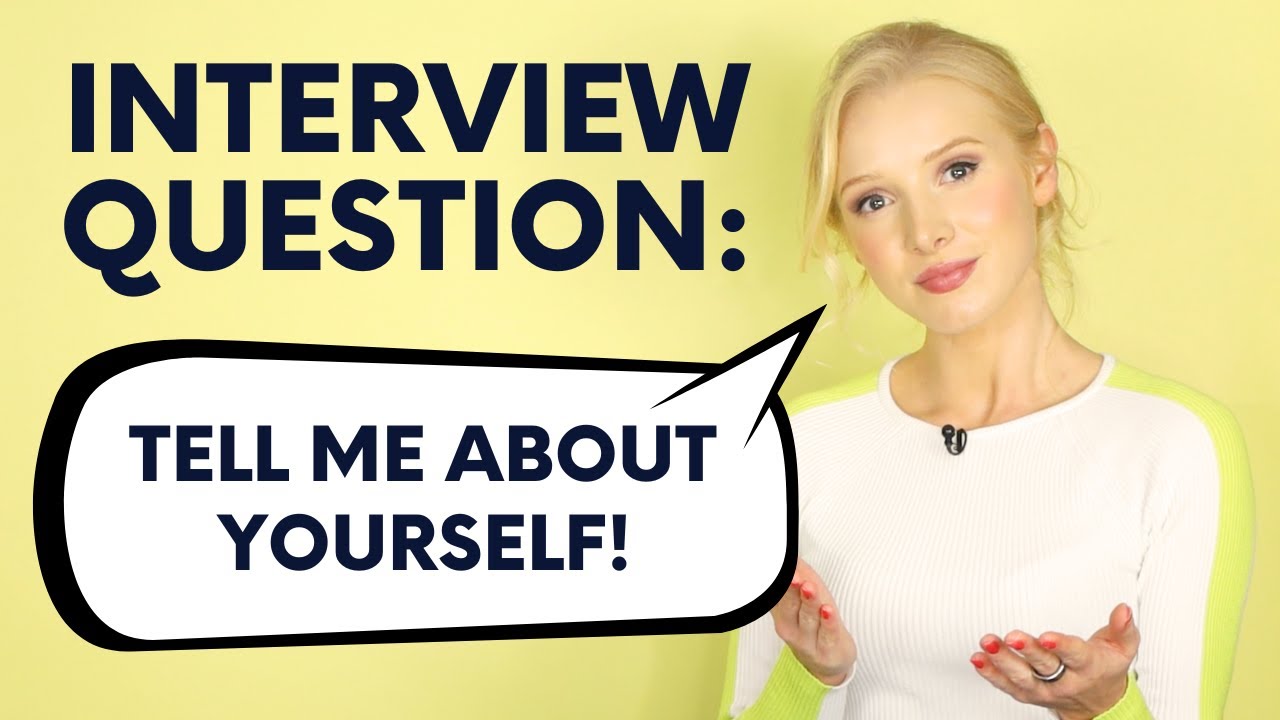SELF INTRODUCTION | How to Introduce Yourself in English | Tell Me About Yourself Interview Answer
Summary
TLDRIn this English with Lucy video, viewers learn how to craft a compelling self-introduction. Lucy covers greetings, name introductions, location, job and company details, qualifications, hobbies, and even fun facts. She emphasizes the importance of preparation and offers tips to make introductions natural and engaging.
Takeaways
- 😀 Learning to introduce yourself properly is crucial for various situations like English classes, job interviews, new jobs, hobbies, or large events.
- 📝 It's important to have a self-introduction pre-written and memorized to be prepared for unexpected situations.
- 🙋♀️ Greetings are the starting point of a self-introduction, and they can be formal or informal depending on the context.
- 🌞 Formal greetings include 'hello', 'good morning', 'good afternoon', and 'good evening', with attention to the time of day.
- 🌙 Informal greetings can vary widely, such as 'hey', 'what's up', 'hi', 'hiya', and 'yo', and should be chosen based on personal comfort and regional usage.
- 👤 Introducing your name can be done in several ways, such as 'I'm Lucy', 'I am Lucy', 'my name is Lucy', or 'this is Lucy', depending on the situation.
- 📍 Discussing your location involves stating where you're from, your nationality, or where you currently live, with phrases like 'I'm from Bedfordshire' or 'I'm British'.
- 💼 Mentioning your position and company is essential, especially in professional settings, using phrases like 'I work at Google in the marketing department'.
- 🎓 Qualifications can be highlighted, particularly in job interviews, using phrases like 'I'm a marketing graduate' or 'I have a BA degree in marketing'.
- 👨👩👧👦 Talking about family can be done by stating the number of siblings or using phrases like 'I'm from a family of four' or 'I'm an only child'.
- 🏃♂️ Hobbies can be mentioned to give a personal touch, using phrases like 'I'm a big fan of running' or 'I'm a keen tennis player'.
- 🎉 Having a 'fun fact' prepared can be a great way to stand out and make your introduction memorable, such as a unique skill or unusual experience.
Q & A
What is the main topic of the video?
-The main topic of the video is self-introduction and how to properly answer the question 'Tell me about yourself.'
Why is it important to learn to introduce oneself properly?
-It is important because one might need to introduce themselves in various situations such as English classes, job interviews, new jobs, or large events without any forewarning.
What does the video suggest to do in order to successfully introduce oneself?
-The video suggests having a self-introduction pre-written and learnt to be prepared for any situation where one might need to introduce themselves.
What are some examples of formal greetings mentioned in the video?
-Examples of formal greetings include 'hello,' 'good morning,' 'good afternoon,' 'good evening,' and the less common 'good day' in British English or 'g'day' in Australian English.
How should one introduce their name in a situation where they are not visible to the audience?
-In such situations, one can use 'my name is' or the contracted form 'my name's,' or 'this is [Name].'
What are some ways to describe one's geographical location in a self-introduction?
-One can say 'I'm from [place],' 'I'm [nationality adjective],' 'I come from [place],' 'I was born and raised in [place],' or 'I'm originally from [place] but now live in [another place].'
What is the difference between saying 'I work at' and 'I work for' a company?
-Both 'I work at' and 'I work for' are correct, but 'at' is used to specify the location of the workplace, while 'for' indicates the company one works for.
How can one mention their qualifications in a self-introduction?
-One can mention being a graduate or postgraduate in a specific subject, having a degree such as 'BA in marketing,' or currently taking a course in a particular subject.
What is the correct way to talk about the size of one's family in English?
-In English, one should say 'I'm from a family of [number]' or 'We are a family of [number]' instead of saying 'We are [number] in our family.'
Why is it recommended to have a 'fun fact' prepared when introducing oneself?
-It is recommended because thinking of an interesting fact about oneself on the spot can be daunting, and having a prepared fun fact can make the introduction more memorable and engaging.
What is the final advice given in the video for creating a self-introduction?
-The final advice is to condense the self-introduction into two flowing sentences, which makes it sound more natural and easier to remember.
Outlines

This section is available to paid users only. Please upgrade to access this part.
Upgrade NowMindmap

This section is available to paid users only. Please upgrade to access this part.
Upgrade NowKeywords

This section is available to paid users only. Please upgrade to access this part.
Upgrade NowHighlights

This section is available to paid users only. Please upgrade to access this part.
Upgrade NowTranscripts

This section is available to paid users only. Please upgrade to access this part.
Upgrade NowBrowse More Related Video

Tell Me About Yourself - An Excellent Answer to this Interview Question

15 English personality adjectives| How to ask and talk about someone's personality?

APPLICATION LETTER (SURAT LAMARAN KERJA) // KELAS XII BAHASA INGGRIS WAJIB

Cara Memperkenalkan Diri dalam Bahasa Inggris | Self Introduction

How to Write a Personal Narrative

Bocoran Interview Kerja Bahasa Inggris Dan Cara Jawabnya!
5.0 / 5 (0 votes)